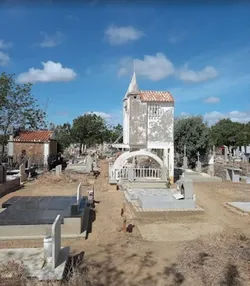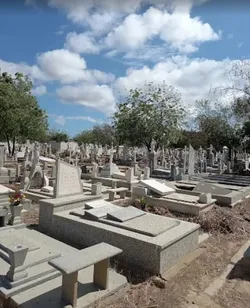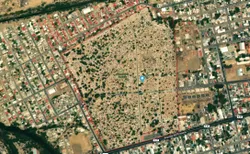
The Jewish Cemetery of Coro in Coro, Venezuela is the oldest Jewish cemetery in continuous use in the Americas. This sacred place is more than just a burial ground, it is a profound testament to the resilience and integration of Jewish communities in Latin America, tracing back centuries.
Research your ancestors on MyHeritage
HistoryHistory
The history of the Jewish Cemetery of Coro dates back to 1832,[1] although Jewish presence in the region began decades earlier. Sephardic Jews, mainly of Dutch-Portuguese origin, immigrated to Venezuela from the Caribbean island of Curaçao, which had a well-established Jewish community under Dutch rule. Many immigrants who were seeking economic opportunities and religious tolerance settled in Coro, a bustling trade hub on the Venezuelan coast.
This small but vibrant Jewish community established the cemetery, marking the growing permanence of Jewish life in Venezuela. Coro's cemetery was the first organized Jewish burial ground in the country, and it signified a shift from transient mercantile activity to the establishment of families and communities.
Gravestone design and symbolismGravestone design and symbolism

The cemetery follows the Sephardic traditions of its founders, with simple, horizontal gravestones that are mostly ledger style, a slab that covers the whole length of the casket. The inscriptions are in a mixture of Hebrew, Spanish, Dutch, and Portuguese.
The oldest gravestones include many Sephardic symbols, such as the menorah, Cohen hands, or Star of David, along with poetic epitaphs that profess faith and reveal diaspora identity. As the years progress, there is a blend of the Jewish symbols with Christian symbols which were introduced by colonial Venezuelan cultures with Spanish influence. The most recent gravestones have even more of the Christian symbols, including angelic faces, which would have been prohibited in early Jewish traditions, and less of the Sephardic symbols.
Thus, the gravestone symbols create a timeline of sorts, showing the transition of the community of Coro from predominately Jewish, to a mixture of Jewish and Venezuelan Christians as intermarriage occurred, and finally to a predominately Venezuelan-Christian community.[1]
Preservation and recognitionPreservation and recognition
The Jewish Cemetery of Coro is well preserved and surrounded by walls that protect the gravestones from urban encroachment.
In recognition of its cultural and historical value, The Jewish Cemetery of Coro was designated a National Historic Monument of Venezuela in 2004. This designation was a milestone in preserving Venezuela’s Jewish heritage and it has served as an model for the protection of other Jewish sites in Latin America.
The cemetery is currently under the stewardship of both Venezuelan Jewish organizations and international partners, including the descendants of those buried there. Collaborative efforts have included restoration of tombstones, documentation of inscriptions, and public education initiatives.
Notable burialsNotable burials
Among the most historically significant individuals interred in the The Jewish Cemetery of Coro are:
- Joseph Curiel, a key figure in Coro’s 19th-century Jewish merchant class, whose family maintained strong cultural and economic ties with Curaçao
- Salomón Henríquez, a respected community elder who played a major role in helping newer Jewish immigrants settle and integrate into local society
- Members of the Senior and Jesurun families, some of whom were linked to early Jewish leadership in Curaçao and later in Caracas (view Senior family gravestones here).
The Jewish Cemetery of Coro todayThe Jewish Cemetery of Coro today

The Jewish Cemetery of Coro is a physical reminder of the migration patterns that brought Sephardic Jews from Iberia to Amsterdam, on to Curaçao, and eventually to mainland Venezuela.
Today, Coro is a UNESCO World Heritage Site, and The Jewish Cemetery of Coro stands as a precious link between the Jewish diaspora and the colonial histories of South America and the Caribbean. Although the Jewish population in Coro has dwindled—with many families having relocated to Caracas, the United States, or Israel—their legacy remains deeply etched in The Jewish Cemetery of Coro’s sacred stones.
Explore more about Jewish cemeteries and Jewish genealogyExplore more about Jewish cemeteries and Jewish genealogy
- Venezuela - Collection Catalog at MyHeritage
- Death, Burial, Cemetery & Obituaries at MyHeritage Collection Catalog
- Understanding Jewish Gravestones at BillionGraves Blog
- MyHeritage, BillionGraves, and Museum of Jewish Heritage (MJH), Forge Partnership to Provide Greater Access to Jewish Burial Records at MJH
- Researching Your Jewish Ancestors at Legacy Family Tree Webinars
- JewishGen, The Home for Jewish Genealogy, Museum of Jewish Heritage
References
- ↑ 1.0 1.1 CORO: Falcon. International Jewish Cemetery Project
